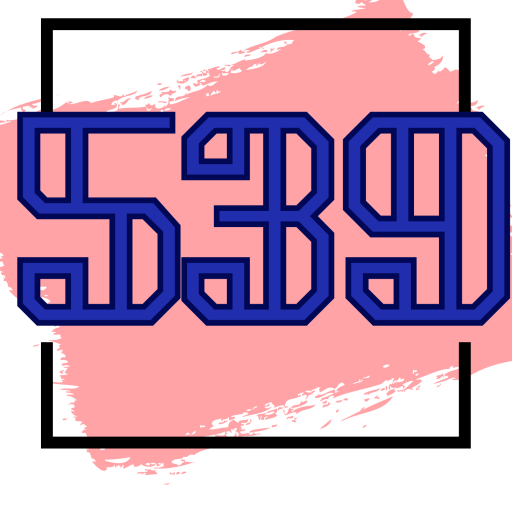Area codes play a crucial role in our daily communication, and understanding them is essential for staying connected.
We will explore the history and significance of Area Code 303, from its origins and evolution to its geographical coverage and impact on communication.
Delve into the reasons for area code changes and discuss the future of Area Code 303 to uncover the secrets behind this important identifier and its potential changes in the ever-evolving world of telecommunications.
Understanding Area Codes
Area codes, formally referred to as Numbering Plan Areas (NPAs), play a crucial role in the telecommunication infrastructure by establishing a structured mechanism to guarantee the uniqueness of each phone number within a designated geographical area. The allocation and administration of these codes are overseen by the North American Numbering Plan (NANP), which divides regions into discrete territories, each denoted by a three-digit numerical code.
What are Area Codes and How are They Assigned?
Area codes are fundamental components of the North American Numbering Plan (NANP), consisting of three-digit numerals that precede telephone numbers to delineate specific geographic regions. These numerical codes play a critical role in the effective allocation of phone numbers, thereby mitigating overlap and confusion within communication networks.
In the context of landline number allocation, area codes are typically associated with distinct cities or regions to facilitate localized calling. Conversely, the geographic alignment of wireless numbers with their respective area codes may not always be absolute, owing to factors such as mobility and number portability.
Within the NANP framework, the NPA-NXX system further subdivides area codes into smaller units known as central office codes, which enhance the precision in routing and management of telephone calls.
History of Area Code 303
The area code 303 was among the original area codes established in 1947 and encompassed the entirety of Colorado. As the population expanded and the need for telephone services grew, various modifications were implemented, including the introduction of overlay codes.
Origins and Evolution of the 303 Area Code
The 303 area code was initially designated to encompass the entire state of Colorado, encompassing significant urban centers like Denver and Boulder.
As the population expanded and telecommunications technology progressed, there arose a heightened demand for new telephone numbers. Consequently, additional area codes, such as 720 and 970, were introduced in Colorado to meet the expanding telecommunications requirements of the state. Subsequently, the 303 area code became more localized to specific regions within Colorado, with Denver and its adjacent areas predominately utilizing the code.
This evolution exemplifies the fluid nature of telecommunications infrastructure and underscores the imperative of adjusting to the evolving demands of a burgeoning population.
Geographical Coverage of Area Code 303
Area code 303 predominantly serves the Denver metropolitan area, encompassing several cities and regions throughout Colorado. Notable locations within this area code include Boulder, Aurora, and Thornton, highlighting the extensive geographical coverage of this particular code within the state.
Cities and Regions Covered by 303
The 303 area code encompasses a diverse range of cities and regions within Colorado, such as Denver, Boulder, Aurora, and Thornton, each contributing to the varied landscape of the state.
Denver, as the capital of Colorado, sets itself apart as a bustling urban center with a population exceeding 700,000 residents. Recognized for its breathtaking mountain views, vibrant arts community, and flourishing tech sector, Denver presents a unique fusion of outdoor recreational opportunities and urban cultural attractions.
Boulder, home to the prestigious University of Colorado, draws a varied population due to its forward-thinking mentality and emphasis on outdoor living.
Aurora, a city experiencing rapid growth, features a diverse population and a robust economic presence, notably the Anschutz Medical Campus.
Thornton, noted for its family-friendly neighborhoods and recreational amenities, continues to entice new residents seeking a suburban lifestyle in proximity to Denver.
Reasons for Area Code Changes
Changes in area codes are frequently required due to significant factors such as population expansion and technological progress. The escalation in demand for new telephone lines, particularly in light of the widespread use of mobile devices, underscores the necessity for adjustments in area codes to support this expansion.
Population Growth and Technology
Population growth and technological advancements have a notable impact on the necessity for additional area codes, as the increasing number of individuals and devices necessitate unique telephone numbers.
With the expansion of the population and the influx of people relocating to urban areas, there has been a surge in the demand for wireless services and dependable Internet connections. Internet service providers, such as Wirefly, play a vital role in meeting this escalating need for connectivity, prompting the requirement for the assignment of new area codes to accommodate the growing user base. The advancement of technology underscores the importance of telecommunications infrastructure being adaptive and scalable, ensuring smooth communication for both businesses and individuals.
Impact of Area Code 303 on Communication
The 303 area code has significantly influenced communication within Colorado, enabling both landline and wireless connections. This area code has facilitated the provision of a range of telecommunication services by companies such as Teleport Communications America, Qwest Corporation, and Sprint Spectrum L.P..
Advantages and Disadvantages
The 303 area code presents numerous benefits, such as a robust regional identity and the provision of reliable telecommunication services by reputable providers like Teleport Communications America, Qwest Corporation, and Sprint Spectrum L.p.
This area code plays a pivotal role in enhancing the regional visibility of the areas it covers, fostering a sense of community among residents and businesses. The utilization of established telecommunications companies ensures a high level of service quality and network infrastructure reliability.
One potential drawback associated with the 303 area code is the risk of number depletion due to the escalating demand for new phone numbers over time. To address this challenge, additional overlays may need to be implemented to accommodate the expanding population and changing communication requirements within the region.
Future of Area Code 303
The trajectory of area code 303 is expected to be shaped by continuous technological advancements and demographic transitions. Forecasts suggest forthcoming alterations to cater to the escalating need for additional numbers while upholding effective communication systems within the Mountain Time (GMT-7) zone.
Predictions and Potential Changes
Anticipated developments for area code 303 indicate the potential necessity for additional overlays or splits to address the escalating demand for new telephone numbers.
With the ongoing growth of the population in the region, the current telephone number resources within area code 303 may eventually prove inadequate. In such circumstances, regulatory bodies may contemplate the implementation of supplementary overlays or territorial divisions to guarantee that residents and businesses have access to a sufficient inventory of phone numbers. The objective of these adjustments would be to optimize communication services and forestall number depletion, thereby preserving effective connectivity within the Mountain Daylight Time (MDT) zone and adhering to synchronized timing with Greenwich Mean Time (GMT). Such modifications are instrumental in accommodating the evolving telecommunications requirements of the populace and facilitating seamless communication across diverse time zones.
Frequently Asked Questions
What is the area code 303?
The area code 303 is a telephone area code in the state of Colorado, United States.
Which cities or locations are covered by the area code 303?
The area code 303 covers the cities of Denver, Boulder, and Brighton, as well as several smaller towns and communities in the state of Colorado.
How long has the area code 303 been in use?
The area code 303 has been in use since 1947, when it was one of the original area codes established in the North American Numbering Plan.
Is the area code 303 currently the only area code in Colorado?
No, the area code 303 is not the only area code in Colorado. It is one of three area codes in the state, with the other two being 719 and 970.
What are some common scams associated with the area code 303?
Some common scams associated with the area code 303 include fraudulent phone calls claiming to be from the IRS or other government agencies, as well as phone spoofing scams where the caller ID is manipulated to appear as a legitimate local number.
Are there any changes or plans for changes to the area code 303 in the future?
Currently, there are no plans for changes to the area code 303. However, as the population in the state of Colorado continues to grow, there is a possibility that new area codes may need to be introduced in the future to accommodate the increasing number of telephone users.

